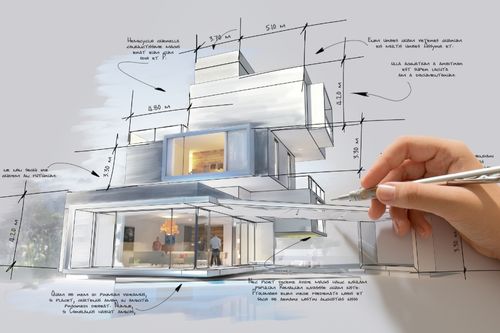Exactly How CDA Architects Include Eco-Friendly Practices in Architectural Projects
Exactly How CDA Architects Include Eco-Friendly Practices in Architectural Projects
Blog Article
The Crucial Function of an Engineer in Shaping Sustainable Urban Atmospheres for Future Generations
The role of an engineer in crafting lasting urban atmospheres is significantly critical in reacting to the difficulties of climate change and urbanization. By perfectly incorporating environmental concepts into their styles, designers not just improve the visual and practical high quality of metropolitan rooms however also address pressing problems such as energy performance and social equity.
Comprehending Lasting Urban Design
Sustainable urban style incorporates environmental concepts with urban planning to create settings that are not only livable however likewise resistant. This technique stresses the significance of including natural systems into the city fabric, making certain that development satisfies the demands of the here and now without jeopardizing the capability of future generations to fulfill their own needs. Crucial element of sustainable metropolitan style consist of reliable land use, the promotion of biodiversity, and the combination of eco-friendly rooms, every one of which add to boosted lifestyle for locals.
Furthermore, sustainable metropolitan style focuses on the reduction of the metropolitan warm island impact, enhanced air high quality, and efficient stormwater administration. It motivates making use of eco-friendly sources and energy-efficient structure methods, which dramatically reduced carbon impacts. Lasting city style promotes social equity by creating accessible public spaces and advertising mixed-use advancements that cater to varied populaces.
With thoughtful preparation and ingenious layout techniques, lasting metropolitan atmospheres can boost neighborhood strength against environment modification while fostering financial advancement. This holistic strategy not just addresses immediate city difficulties but additionally prepares for healthier, a lot more sustainable cities for generations ahead.
Secret Responsibilities of Engineers
Architects play a crucial function fit lasting urban settings by translating layout principles right into tangible structures and rooms. Their obligations incorporate a broad array of activities that add to the overall success of metropolitan layout projects.
Primarily, architects carry out comprehensive website evaluations to understand the ecological, social, and social context of their projects. This foundational expertise informs their style choices, ensuring that buildings integrate with their surroundings. They also take part in joint procedures with stakeholders, including city coordinators, designers, and the area, fostering an inclusive technique to city growth.
Additionally, architects are charged with producing layouts that enhance power efficiency, resource conservation, and performance. They need to abide by neighborhood zoning laws, building codes, and sustainability certifications, guaranteeing conformity while pushing the limits of advancement.

Ingenious Products and Techniques
In the pursuit of ecologically accountable layout, innovative products and strategies have arised as essential aspects in the production of sustainable metropolitan settings. Architects are progressively making use of materials that lessen ecological impact while improving power performance. Recycled products, such as redeemed timber and repurposed steels, not just reduce waste but also include special aesthetic top qualities to structures.
In addition, improvements in technology have brought about the advancement of high-performance materials, such as insulated concrete kinds (ICFs) and photovoltaic or pv glass, which add to energy conservation and harness renewable resource. Methods such as passive solar layout and eco-friendly roofing systems further exhibit exactly how architecture can harmonize with all-natural systems, lowering reliance on artificial home heating and cooling.
Moreover, the assimilation of smart products, which adapt to ecological modifications, supplies appealing avenues for enhancing building efficiency - cda architects. These products can respond to temperature level changes or moisture levels, maximizing comfort and sustainability
Inevitably, the tactical choice and application of innovative materials and strategies equip engineers to create metropolitan rooms that are not only useful and aesthetically pleasing however additionally resilient and ecologically liable, making sure a my site lasting future for generations to come.
Neighborhood Involvement and Collaboration
The success of ingenious products and strategies in sustainable urban design is dramatically enhanced by active neighborhood involvement and cooperation. Architects need to identify that the constructed environment exceptionally impacts the lives of regional residents, making it imperative to involve them in the style process. Involving the community fosters a feeling of ownership and accountability, guaranteeing that growths not only fulfill aesthetic and functional needs however additionally mirror the values and goals of those who inhabit them.

Effective community interaction additionally aids in prioritizing social equity within urban advancement. By taking into consideration the voices of marginalized populations, architects can produce areas that are comprehensive and fair. This way, neighborhood interaction and cooperation become indispensable to achieving truly lasting city environments that serve the requirements of present and future generations.
Future Patterns in Lasting Design

Furthermore, developments in modern technology are shaping future fads in sustainable design. The combination of clever products and building systems enables real-time power monitoring, boosting effectiveness and lowering carbon footprints. Developments such as environment-friendly roofing systems, living wall surfaces, and energy-generating facades are coming to be common practices, even more advertising eco-friendly balance within metropolitan environments.
Furthermore, a change in the direction of biophilic design is acquiring grip, emphasizing the connection between nature and human wellness. By including natural environments, designers produce rooms that cultivate mental health while promoting biodiversity.
Final Thought
Finally, engineers are pivotal ahead of time sustainable urban environments with their experience in layout, innovative products, and area engagement. By prioritizing energy efficiency and resource preservation, these specialists contribute to the creation of resilient urban spaces that meet the needs of present and future generations - cda architects. The integration of environmental principles not only enhances livability but additionally promotes social equity, ensuring advancements reverberate with the values and desires of the neighborhoods they serve
Report this page